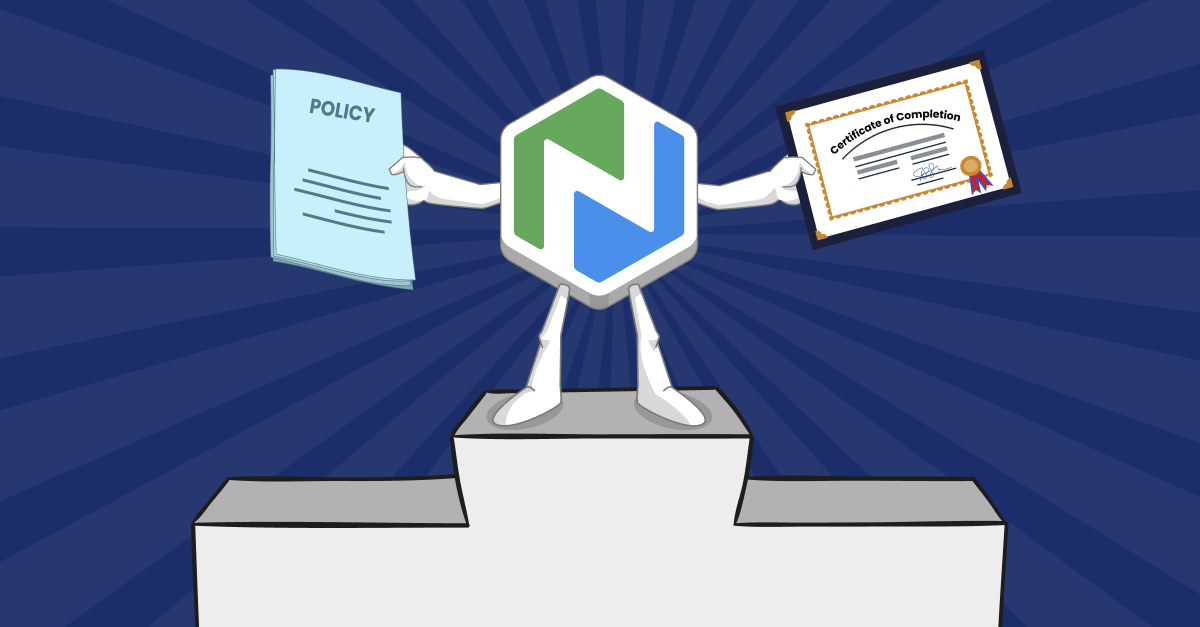Training Techniques for Enhanced Teamwork in the Workplace
Boost team performance with training strategies for overcoming common challenges and fostering a culture of resilience and cohesion.

“Ability to work on a team.”
“Commitment to teamwork.”
“Works well with a team.”
You’ve probably seen (or written) these common phrases in job descriptions. Whether the work is full- or part-time, remote or onsite, organizations expect employees to work on teams. And many employees want to work on teams.
An Indeed post on teamwork and collaboration notes that “teamwork in the workplace is a group's ability to work together effectively, communicate well, define roles and leadership, share resources, and actively listen to each other.”
The benefits of teamwork are well established, according to the post’s authors. “Collaborative teamwork can promote innovation, increase job satisfaction, find solutions to resolve problems, and develop excellent soft skills.”
Organizations that rely on teams may see more creative thinking, productivity, and efficiency.
Well-functioning teams build on individual strengths to create something greater. According to Gallup, “Individuals who know their strengths work together to form better partnerships, and more thoughtful partnerships create stronger teams.”
As employees leverage their strengths on a team, team members learn more about each other, and “when team members value each other's strengths, they more effectively relate to one another, avoid potential conflicts, boost group cohesion, and create positive dialogue.”
The result, according to Gallup? “The strengths and dynamics of your team directly affect business outcomes.”
Common Team Challenges
But what happens when teams are ill-defined or ineffective, not communicating or sharing resources, or not actively listening to each other?
You probably know that what organizations say about teamwork and what happens in the workplace can…differ. Any group of individuals will have challenges, and common teamwork challenges can derail projects, create conflict, and ultimately affect organizational culture.
Jamie Birt, a Career Coach with Indeed, identified fourteen common teamwork challenges. Let’s look at a few:
Lack of clarity. If individuals don’t understand what they’re supposed to be doing—or why—the team won’t function well. Lack of clarity means that people won’t know what you want. And if they don’t know what you want, they won’t be able to deliver it—or will deliver results that send projects off course. Clear expectations help everyone move in the same direction.
Poor communication. Even the best communicators fall flat sometimes. Withholding key information, sloppy record-keeping, refusing to accept feedback, and ignoring good suggestions can all lead to dysfunctional teams. Teammates may have different communication styles. Teams may have problems with other teams. And poor communication from managers can impact how a team functions.
Lack of trust. Lack of clarity and poor communication can lead to a lack of trust, which complicates and compounds team problems. Trust is a key feature of well-functioning teams, and when it doesn’t exist, team members are less likely to ask for help, slowing the team down and dampening innovation and creative problem-solving.
Personality conflicts and competition. Birt notes that conflict can lead to
“situations in which two employees…disagree,” resulting in “decreased morale or poor cooperation.” And while competition isn’t bad, if it becomes the main focus or a means to undermine teammates, it can throw the entire team off balance. Internal competition can exacerbate other challenges like communication, trust, and clarity, making what could have been small problems much worse.
Lack of engagement. All of these challenges can result in a general lack of engagement. If individuals don’t feel connected to each other, their work, or the team, they won’t give their best. Productivity and quality suffer, and everyone loses “focus and enthusiasm,” which can make the challenges listed above worse.
What Makes Teams Work?
These challenges are common, but your organization doesn’t have to settle for poor-functioning teams. Instead of focusing on the challenges, learning what others do well can help you drive a team toward health, effectiveness, and cohesion.
Well-functioning, resilient teams have several things in common:
Psychological safety. Ferrazzi, Race, and Vincent list candor as the first of four qualities of a resilient team. They note that teams need “open, honest dialogue and feedback with each other” to function well.
That kind of honesty comes from a feeling of psychological safety, which Amy Gallo defines as “a shared belief held by members of a team that it’s OK to take risks, to express their ideas and concerns, to speak up with questions, and to admit mistakes—all without fear of negative consequences.”
In an interview with Think Fast, Act Small, Sara Singer notes that psychological safety isn’t just up to teams, but that “it is a critical concept…for the people who lead them,” a perspective shared by Dori Meinert in an article on improving teamwork, who says managers “must create a psychologically safe space so that team members feel it’s safe to speak their minds.”
Emotional loyalty. A key feature of resilient and well-connected teams is what Gallup calls emotional loyalty. This feature indicates a deep connection to the team and the individuals on it, or teammates who “truly care for each other and share both success and failure,” according to Ferrazzi, Race, and Vincent. Creating an organizational culture of psychological safety and treating staff as humans can help create the conditions for emotional loyalty to flourish, resulting in teams that can build great things together—and lean on each other when faced with challenges and setbacks.
Willingness to learn. Ferrazzi, Race, and Vincent round out their list of key characteristics of resilient teams with resourcefulness and humility. To develop both, teammates must be willing to learn from each other. Individuals may need to ask for help, admit when they don’t know something, and pull together in new ways. Singer says that learning-oriented teams “learn from mistakes and experimentation so they can adapt and change and innovate” but that this can only come about when leadership creates a culture of training that includes “practices and processes that promote training, knowledge acquisition [and] performance monitoring.”
Which leads us to training. 🙂
Design Effective Training
Moving a team past common challenges and into resilience can feel overwhelming. It takes work, but the good news from Indeed is that “teamwork is a set of learned skills.”
Teams don’t magically form and, once formed, don’t magically operate as effective and cohesive units. It takes time, strategy, and effort, but it can be done. Teaching individuals how to work on a team, teaching teams how to work together, and teaching management how to lead teams effectively can all be done with training—showing teams how to “engage with each other more and do better on tasks,” according to a piece on making teamwork training work by Iulia Alina Cioca.
Talk with the team. Marjorie Dervin’s piece on effective performance management for teams points out that “behaviors that make a team successful vary, based on the purpose of the team.” So, before you launch into delivering training you think a team needs, check in with them.
Indeed’s article on training types and tips recommends you “use your team's input to determine training needs,” and we agree. Talking with team members can help you decide if you need to start with group training, focus on individual training, or devise a plan that addresses both. You may have a sense of what kind of training each team needs, but taking time to talk about their challenges and successes makes teams more likely to adopt training with an open mind.
Set training goals. Gallup notes that “managers should not assume that employees always know how to accomplish their goals.” So, be specific about what you want to achieve with training. “Completing training” isn’t a goal. Instead, consider the behavioral shifts you want to see in the workplace. Do leaders need to understand better how to solicit feedback? Do teams need to learn how to be more culturally competent? Once you understand—and communicate—goals, you can design or deploy training to help teams meet them.
Identify relevant training topics. After you identify training goals, you can match them to training topics. Maybe your team needs customer service communication skills like answering the phone or sending professional emails. Or perhaps safety training will help them look out for each other at work. Topics like cultural competency can help diverse teams work better together. And training on speaking up at work can increase psychological safety.
Focus on the big picture. Here at Niche Academy, one of the things our managers always ask is if we understand how our work fits into the larger mission of the organization. They make a habit of connecting small goals to larger initiatives, which helps create a work culture where people feel like what they do matters. Adult learners want to know how learning impacts what they can do. So, take the time to connect training to the big picture so people feel more invested in it.
Include leaders and managers. Training managers and leaders can have a bigger impact than training individual members. Leaders have a profound effect on how teams function. In many ways, they set the tone for how the team manages communication, challenges, and conflict. Ferrazzi, Race, and Vincent note that “leaders must assess the state of their teams, identify weak spots, and then deliver strategies to help team members break down barriers and build foundations of trust, transparency, and self-awareness.” Establishing a training pathway for leaders can help them learn effective communication, conflict resolution, how to establish explicit expectations and more.
Key Questions to Ask About Training
Once you have a sense of what training should include, you’ll want to think about specifics like:
Where will training come from? Finding or developing quality content is your first step. You may want to develop training from scratch, to customize it to your organization, workflows, or policies. If that’s not an option, finding a library of professionally developed courses you can easily embed into your LMS might be the solution.
How will it be offered? Once you have content, you’ll want to consider the best way to deliver it to employees. Depending on your team's needs, in-person, online, and hybrid methods are all options. Synchronous sessions allow for real-time collaboration. Asynchronous sessions allow employees to learn when it’s convenient for them.
Can training be customized for individuals and teams? However you deliver training, remember that one size doesn’t fit all. Forcing employees to sit through training they don’t need guarantees disengagement. On the other hand, neglecting core training can slow growth and productivity. Some teams may need learning pathways that break down complicated topics or processes. Others might benefit from training on targeted tasks or skills.
How will you track completion? Team training is an investment, and it’s worth thinking through how to confirm employees complete training. In some industries, compliance rules may require some evidence of completion. Being able to track attendance, time in online courses, and completion of a course provides valuable data for your organization.
How will you measure learning? Completing training is one thing—learning is another. Incorporating assessments into training is key to measuring learner success. Activities, reflection questions, case studies, and scenarios allow learners to practice new skills in a low-stakes environment. And assessments give you powerful data about whether the training will impact teamwork.
How will you demonstrate a return on investment? When you invest in training, you want to know that it works. Reports on participation and learning outcomes can help you tell a compelling story about how many staff you reached and what they did with the content.
Enhance Teamwork With Training Today
Teamwork takes time, focus, and communication. But it can be taught. Training your team for resiliency is key to driving your organization forward.
Investing in teamwork requires training individuals, managers, team leaders, and the team as a whole. It takes commitment, but the benefits—long-term collaboration, innovation, and success—are worth the effort.
This post is the first in a series of articles we are publishing on topics related to building a better workplace culture. Subscribe to our blog using the form below to be notified when the next article is published.
References
Abrahams, M. (July 15, 2021). Perfecting Teamwork: Building High-Performing Teams by Encouraging Learning. Insights by Stanford Business.
Birt, J. (March 16, 2023). 14 Teamwork Challenges and How To Overcome Them. Indeed.
Cioca, I. (May 8, 2017). Teamwork training: how to make it work. Science for Work
Derven, M. (Nov 29, 2017). What About Teams? SHRM.
Ferrazzi, K., Race, M., and Vincent, A. (January 21, 2021). 7 Strategies to Build a More Resilient Team. HBR.
How to Build Better Teams in the Workplace. Gallup.
How to Train the Team: Team Training Types and Tips. (June 24, 2022). Indeed.
Gallo, A. (Feb 15, 2023). What is Psychological Safety? HBR.
Meinert, D. (Jan 27, 2017). How to Improve Teamwork. SHRM
Teamwork and Collaboration: How to Improve Both at Work. (Feb 27, 2023). Indeed.
.png)
.png)
.png)

.png)
.png)
.png)

.png)
.png)

.png)